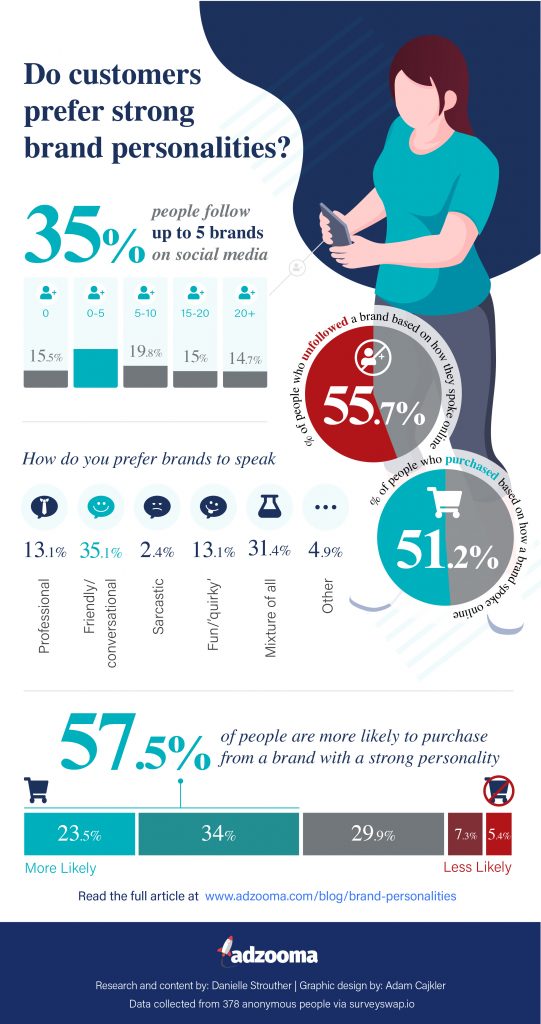Branding is one of the most essential components of a successful advertising strategy. While it’s vital to get the word out about the goods and services your business offers, it’s all for nothing if you can’t communicate why customers should work with you. You need to emphasize the special qualities that make your business stand out in a crowded market.
Good branding doesn’t have to be fancy. Like all the essential components of a quality marketing strategy, a little branding goes a long way. There are ways to establish your brand identity even when you don’t have a big budget.
Here are seven ways you can create an effective branding strategy for your company while spending much less than you’d expect.
1. Build Your Identity

Download Branding Resources Guide
Building a brand starts by having the right tools and advice. Download our top 10 essential tools and resources to kick-start your branding.

Your branding should communicate the core elements of your business’s identity, as well as what services you provide and what industry you work in. You don’t have to hew to industry trends, but your branding should give customers an idea of what your company does with just a glance.
You can start with in-house graphic design if you’re not ready to outsource. Free design and branding tools like Canva or Looka can help you develop logos, graphics and promotional material for your company.
When your business expands and you want to invest more in branding, you’ll also have a good starting point for the designers you work with. Even if not professional, your homemade branding will show others what you consider to be your business’s values and major appeal.
2. Know Your Audience
Market research can take many forms, but it has to get done somehow. Surveys and test ad campaigns are some good ways to gather information.
Once you have a healthy amount of data or a good feeling about your lay of the land, you can start building customer or audience personas. Personas — archetypes of the people you want to sell to — will help you structure your branding strategy by clearly outlining what you think your audience is after.
One example of a persona you might use could be a DIY enthusiast who is after supplies and information. They want knowledge that is reliable, straight-to-the-point and a little rough around the edges. You can then use this simplified version of your audience to inform your branding.
3. Establish Your USP
Your unique selling proposition (USP) is what makes you different from the competition. Identify your USP, then use it to guide your brand voice and demonstrate why customers should choose your company.
“High-quality” and “customer-focused” are phrases that every business wants to use to describe itself. You’ll need to be more specific, and really dig into why your company does what it does.
How many years have you provided top-tier customer service? What kinds of projects have you worked on? How have you overcome challenges? Do you offer something with unique features that no other business can compete with?
Eventually, you may loop back around to describing your business as customer-focused and one that delivers high-quality products. It’s not the best place to start, though. People have heard it before, and they want something a little more substantial.
4. Care About the Consumer
Value your customer’s time. Bad business writing costs smaller companies an average of $420,000 every year. That’s because when you ask customers to slog through marketing-speak without speaking directly to them, they tune out.
There are many different tips and tricks you can use to grab a potential customer’s attention in both branding and writing. However, one of the most effective philosophies to have — which will help make your overall strategy more successful, no matter what you do — is to care about the customer. Treat their time as more valuable than your own. Good branding earns every second it spends in front of a customer’s eyes.
This can be intimidating, but it doesn’t have to be. Start with your research, put yourself in your customer’s position and build on your USPs.
5. Be Part of Your Community
You can create better branding by making your business a part of your community. Better local contacts will help you stay on top of the latest developments and also build a network that will help you know what people need. You’ll also be building relationships with local personalities or industry influencers that you can leverage or build into powerful marketing partnerships.
6. Go Big on Visuals

When designing any part of your branding or marketing strategy, you have an opportunity to use visual design to underline and strengthen your message.
Follow the basic visual design principles that professional graphic designers use. These guidelines will help you reduce clutter, strengthen your message and be clearer in your branding. All this will help your marketing do a better job of communicating what your business offers to customers.
7. Remain Consistent
Especially at first, keep your branding consistent. Repetition is how customers become aware of your company. If you are cycling between logos and branding you don’t have faith in, it’s less likely for you to become familiar and recognizable. You should avoid iterating on your strategy too often. Slowing down will help your message stick in customers’ heads and also give yourself a chance to collect data on what works — or doesn’t — in your current branding strategy.
This also means establishing a consistent web presence, like a blog or set of social media accounts. It will communicate to customers your company’s core mission and beliefs, as well as what your business can do for them. Blogs, interestingly enough, are one of the most trusted forms of information on the internet. A professional-looking blog with some informative, relevant content can help you explain how your business stands out from the competition.
There are other practical reasons for being consistent in your online presence. If you haven’t posted in several months, it can leave potential customers with a bad impression of your brand — or worse, lead them to believe you’re no longer in business.
Why Branding Doesn’t Have to Be Expensive
Branding is one of the most important parts of any marketing strategy — and it’s worth the investment. However, good branding doesn’t have to be expensive. A solid plan does not require glossy graphics and fancy web design to work. Instead, good branding is about knowing your audience and communicating with them in a way they’re receptive to.
Any company can benefit from basic design and branding principles. While bringing in a professional agency can be a good idea in the long term, smaller businesses with less to spare for marketing don’t need to wait — branding doesn’t always need a big budget.
For the end, here is the research about brands with strong personalities and how it influences their purchasing decisions.

Source: Adzooma
About the author
Lexie is a branding enthusiast and web designer. She loves checking out local flea markets and taking her Goldendoodle on hikes. Follow her on Twitter @lexieludesigner and check out her design blog, Design Roast.


